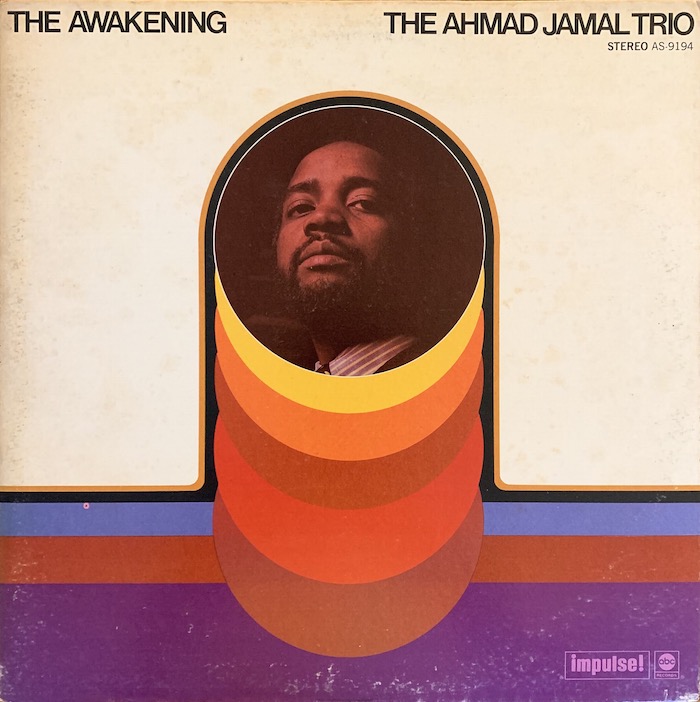
Five years after Herbie Hancock set sail with his 1965 masterpiece Maiden Voyage, another great pianist released a masterpiece of his own. That pianist was the influential Ahmad Jamal and the album is The Awakening, released in 1970 on Impulse!, which contains a beautiful version of Hancock’s track ‘Dolphin Dance’.
Recorded in NYC in February 1970, this album sees Ahmad Jamal on piano accompanied by Jamil Nasser on bass and Frank Gant on the drums. Jamal’s choice to play a nine foot Steinway grand on this album is understandable given his background in both classical music and traditional jazz. As Leonard Feather remarks in the liner notes, ‘Ahmad Jamal is one of the most pianistic of pianists’.
Much like Hancock’s original, Jamal’s ‘Dolphin Dance’ breezily sails along, this time a little faster and with a smaller crew. Jamal’s playing is delicate, spacious and lyrical, a style similar to that of pianist Bill Evans, who was also best known for his small-group work. Like some of Evans’ most famous work, the music on this album is light, nimble and emotionally rich.
What is particularly striking is the spacious nature of the music. Miles Davis mentioned in his 1989 autobiography how he was greatly influenced by Jamal’s ‘concept of space, his lightness of touch [and] his understatement’. This can be heard most clearly in Miles’ famous modal offering Kind Of Blue, on which Bill Evans was an integral player. As I mentioned in an earlier post, Bill Evans was greatly influenced by Zen philosophy, a philosophy in which the idea of space, both physical and mental play an important role; Jamal’s utilisation of space in his music has led critic Tom Moon to refer to him as ‘one of the great Zen masters of jazz piano’. An apt description. Even the album artwork seems to be influenced by this minimalist approach, contrasting white space with a central multicoloured cartouche which contains a photo of Jamal and is reminiscent of religious iconography or a tribute to a spiritual leader.
It is therefore no surprise that The Awakening was discovered 20 years later by a new generation of NYC hip hop producers mining dusty crates for rare sounds to use as the musical backbones of their beats, many of which ended up becoming classics from hip hop’s golden era. Jamal’s playing can be heard most famously on tracks by Nas, Pete Rock & C.L. Smooth, Jeru The Damaja, Shadez Of Brooklyn and Common. Over time The Awakening has become a cornerstone of hip hop history and continues to act as a sample goldmine with more recent producers such as Madlib drawing influence from Jamal’s work. The popularity of Jamal’s music with hip hop producers is no doubt due to the spacious arrangements, rich with melodic content and non-intrusive drums, all ingredients for a perfect sample.
As with Yusef Lateef’s Eastern Sounds, Ahmad Jamal’s The Awakening is another album that I would argue is ‘perfect’ in every way. From the stellar musicianship and beautiful arrangements to the album’s striking artwork and hip hop legacy, The Awakening is the definition of a jazz masterpiece and a fantastic point of entry for anyone looking to get deeper into jazz.
Explore more music from Jamal and his talented trio in our ‘Kings Of The Keys’ playlist.
Side note: Much to my amusement, I saw one sharp eared YouTuber highlighted the similarity between Herbie Hancock’s ‘Dolphin Dance’ and the Monsters Inc. intro music. Listen for yourself!
If you enjoyed this post and want to stay updated, make sure to subscribe to our Spotify playlist and follow us on Instagram and Twitter!
